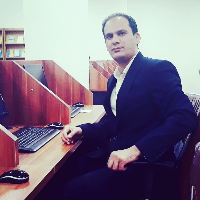Explaining the Pattern of Tribes’ Geopolitical Relations in Mamasani Electoral District
Elections and political participations are concepts and events that have different approaches and aspects that each one falls in research focus of one of social sciences. Meanwhile, electoral district, spatial opponents, environmental perception of spatializing streams, geopolitical weight of electoral districts are in the focus of election geography as a subdiscipline of political geography. Mamasani electoral district in Fars province is a type of constituency that traditional relations of tribal power of county are regenerated in competition atmosphere in modern political act of election. This means that tribes and their rites are one of the most influencing spatializing streams in Mamasani electoral district. In this county, each tribe as a political- spatial structure is seeking for its internal solidarity and competition based on tribal realms in order to be able to render their favorite candidate to the parliament. Therefore, attempt to attract maximum votes and to achieve power have been undertaken for power relations in the process of parliament elections. These relations are scrutinized based on "interactive", "competitive", "authority" and "domination" patterns in the frame of political geography or geopolitics. Accordingly, tribes are able to use these patterns that have consistent history, immense realm and population, economic potency, influential groups and impressive forces, in other words, have more spatial and local weight. This research tries to explain the pattern of geopolitical relations of tribal groups in Mamasani electoral district.
While explaining the pattern of geopolitical relations and its types, this paper investigates the political power and role- playing of each tribe in the frame of the election. This topic has been disregarded about Mamasani society. Accordingly, it is considered that any research and study explaining the pattern of geopolitical relations of tribal groups has not been done. Study method has a descriptive- analytic nature and required data are gathered using library, documentary and field methods.
The research findings show that the pattern of geopolitical relations in Mamasani electoral district has different aspects, and "interactive", "competitive", "domination" and "authority" patterns among different tribes are existed. However, Bekash, Javid and Rostam tribes have been impressing in generating these patterns. The attempt of each one of these political- spatial structures to conquer the election competition has underlain forming and generating different patterns. In this framework, tribes like Bekash and Javid have been able to take more seats in different periods of election due to being settled in central area of Mamasani county and having further common geographical boundary with other tribes, significant vastness and population, using passionate and concordant forces and electoral advertisements. On the other hand, Rostam tribe is still seeking its political and social status in Khan Period, because has been always active in tribal structure of Mamasani. So, this tribe's triumph means strengthening geopolitical weight. However, geographical obstacles (distance from Nurabad city and having any common boundary with Doshman Zyary and Mahvarmilani tribes) and the weakness of internal alliance and solidarity has created basic challenges. This situation has caused that this tribe commence an interactive pattern or competition, and has decreased domination or influence on others. Eventually, Doshman Zyari and Mahvarmilani tribes not only are not able to nominate candidates in the election, but also cannot organize themselves. In fact, because of the residents of these tribes’ migration to other counties, it is very difficult for them to be active in policy field. Therefore, it has allied to other tribes and has been turned into the dominated realm of other tribes. Research findings also show the type of geopolitical relations pattern. So, Bekash tribe, as the superior power, has been able to exploit other patterns while interacting with Rostam, Doshman Zyary and Mahvarmilani tribes. This means that, geographical adjacency to Mahvarmilani has underlain the domination and investment in Doshman Zyary territory. However, Bekash and Javid tribes have competitive patterns in the elections. On the other hand, Javid tribe has intended to interact with Rostam tribe and exceeds in Doshman Zyary and Mahvarmilani realms. However, Rostam tribe is not able to avoid interactive pattern with Doshman Zyary and Mahvarmilani and cannot dominate and authorize. Finally, the last two tribes have not defined any especial geopolitical relation for themselves because of having floating votes.
The results showed that given the tribal structure governing Mamasani electoral district in the period of election, competitions with geopolitical natures between tribes settling in Mamasani district are formed on achieving political power (parliament seats). The type and pattern of geopolitical relations are different and includes "interactive", "competitive", "authority" and "domination". As far as, these competitions lead to challenge and quarrel between tribe in Mamasani districts.
- حق عضویت دریافتی صرف حمایت از نشریات عضو و نگهداری، تکمیل و توسعه مگیران میشود.
- پرداخت حق اشتراک و دانلود مقالات اجازه بازنشر آن در سایر رسانههای چاپی و دیجیتال را به کاربر نمیدهد.


